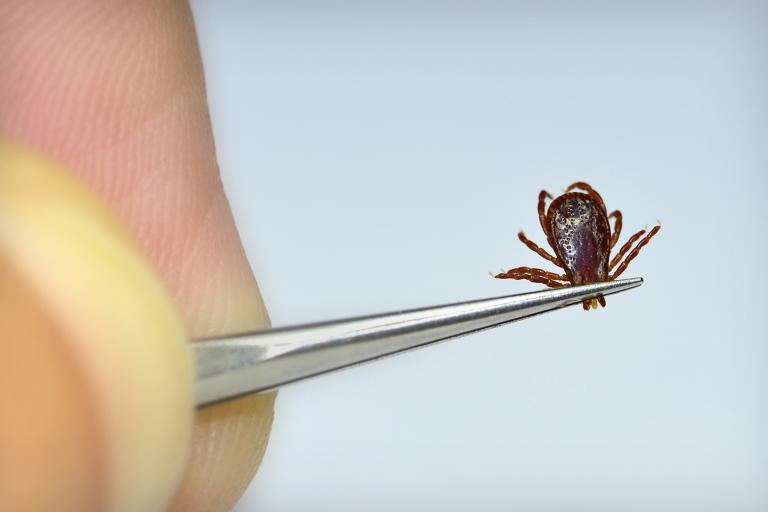Not all ticks carry Lyme disease. But even the kinds that don’t can pass along other nasty infections.
What to Do When a Tick Bites
If you find a tick attached to you, a family member, or a pet, quick and complete removal is key.
-
Grab The Tick
Using fine-point tweezers or a special tick-removing tool, grasp the tick as close to your skin’s surface as you can.
-
Pull Carefully
Pull straight out with steady and even pressure. Avoid squeezing or breaking the tick.
-
Store The Tick
You may wish save the tick in case you decide to have it tested by a lab, health department, or veterinarian for diseases.
Place it in a small plastic bag or vial with a moist cotton ball to prevent the tick from drying out.
-
Clean Up
Wash hands thoroughly. Disinfect the tweezers and the site of the bite.
-
Monitor The Bite
See your healthcare practitioner if:
- you exhibit a red rash at the site of the tick bite
- you develop any flu-like symptoms
- you feel joint pains within the first few weeks
These may signal Lyme disease.

